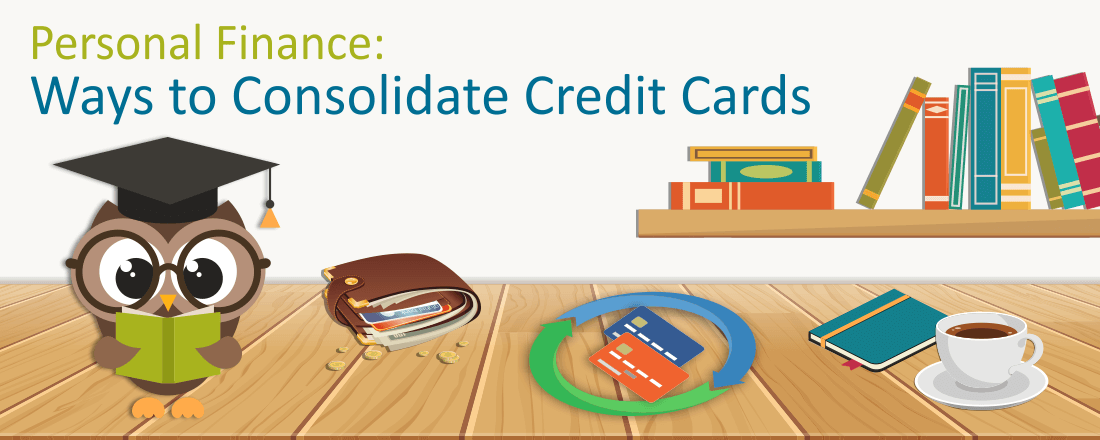
Having credit card debt is stressful enough. Debt across multiple credit cards from different issuers compounds this stress and makes tracking your progress towards a debt free life even more difficult.
Plus, credit card debt is expensive. Chances are, you’re paying an interest rate near 25%, a level high enough to easily keep you in debt for years.
Thankfully, there are tactics you can take to consolidate your debt. But some consolidation methods are better than others.
Transferring Debt to Another Credit Card
Did you know you can transfer your existing credit card debt to a new credit card? This is simply called a balance transfer. And this new credit card, called a
This will save you tons of money, depending on how much debt you have. The zero percent rate essentially allows you to take control of your debt and prevent it from accumulating into an even bigger amount.
In fact, you can get just pay the minimum payment on this new balance transfer card, because the interest charges won’t kick in.
This isn’t recommended, because the minimum payment is so small, that you won’t be making a significant dent in your principal (the original amount you owe, not including interest).

Balance Transfer Pitfalls
With balance transfer cards, there are a few important caveats to keep in mind.
First, the zero percent rate is only good for the debt you transfer onto the card. Let’s say you use this balance transfer card for new expenditures like groceries, gasoline or clothing and you leave that balance on this card. The card’s original interest rate will kick in. That original interest rate won’t be zero percent. Instead, it’ll be closer to the rate you’d pay on a traditional credit card (in the area of 20%). So don’t think of your balance transfer card as a credit card that can be used for everyday purchases. This balance transfer card is simply a way to get you out of debt faster and less expensively.
Secondly, the zero percent rate is not forever. Typically it lasts for up to two years — sometimes even less. If you’re not debt-free by the time the zero percent rate expires, you may need to transfer the debt once again to another balance transfer card. Take advantage of the zero percent period. Apply as much money as you can towards the debt. Even if you can only pay 10%-20% more than the minimum payment, this will still be impactful towards your goal of becoming debt free.
The third caveat with a balance transfer card is the fact that there may be a fee associated with transferring the balance. This fee can be as high as three percent of the amount transferred.
So if you’re transferring $1,000, expect to pay $30. This is much less than what it would cost you if you kept the debt on the higher interest credit card.
If you end up paying a balance transfer fee, run the numbers ahead of time to make sure the interest charges you’re saving outweigh the fee. In most cases, it probably makes sense to pay the balance transfer fee. Still, when you’re in debt, every dollar counts. Aim to find balance transfer cards that don’t have a transfer fee.
A final factor to keep in mind when it comes to balance transfer cards is your credit score. Typically, opening up multiple credit cards within a short period of time can ding your score. Opening a balance transfer card is just like opening any other credit card.
So if you plan to open multiple balance transfer cards, consider allowing some time to elapse between applications to ensure your credit score doesn’t suffer. Then again, if the balance transfer card helps to get you out of debt sooner, that will be better for your score in the long-run than the short-term ding your score may suffer by opening a few credit cards.

Home Equity Lines of Credit
While transferring your credit card debt to a zero percent rate card is one of the cheapest and easiest ways to plow through your debt, there are other options.
If you own a home and have equity in the home (that is, your home is worth more than your mortgage), you can apply for a home equity line of credit.
This allows you to take advantage of the equity in your home as if it were an ATM.
A common use of the money from a home equity lines of credit is for renovations — like installing a new kitchen or bathroom to add value to the home.
Some people also use this money to pay off credit card debt. Now keep in mind, this home equity line of credit needs to be paid back to the bank. You’ll be charged an interest rate on the home equity line of credit.
If the interest rate on the home equity line of credit is less than what you’re paying on the credit card, mathematically, this makes sense. You’re saving money on interest. This tactic comes with a quite a risk. If you default on your home equity line of credit, you run the risk of losing your home to foreclosure. You’re putting one of your most precious assets on the line.
If you default on your credit card, there’s no asset the credit card company can seize. Sure, your credit score will suffer if you stop paying your credit cards, but your home won’t be at risk of a foreclosure. Taking a home equity line of credit is essentially taking on a second mortgage.
If you worry about paying your first mortgage, why would you want another one just to be able to pay off your credit cards? Plus, if the value of your home drops, and suddenly you end up owing more money than your home’s value, you’ll find yourself in another financial pickle. A zero percent card is often a better solution.
